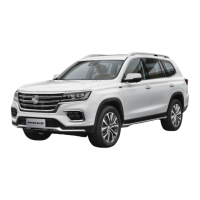
Do you have a question about the MG RX8 and is the answer not in the manual?
| Brand | MG |
|---|---|
| Model | RX8 |
| Category | Automobile |
| Language | English |
Introduces the owner's handbook and service portfolio, and how to use and maintain the vehicle.
Information on vehicle identification numbers (VIN) and their locations on the vehicle.
Details about the instrument cluster, including speedometer, tachometer, fuel, and temperature gauges.
Explains the displays in the information centre, such as temperature, clock, gear, and odometer.
Describes various warning lights and indicators in the instrument cluster and their meanings.
Explains the operation of various lights and switches, including the master light switch and fog lamps.
Details the locations and operation of various air vents in the vehicle.
Explains the touchscreen interface for controlling automatic temperature, including A/C, blower, and zone controls.
Information on the independent air cleaner system, its interface, and filter.
Covers seat adjustment, including manual and power seat controls, and head restraints.
Explains the importance of correct seat belt usage, fastening, and protection.
Details the SRS system, airbag deployment, and safety precautions.
Provides instructions and safety information for using child restraint systems and their positions.
Information on smart keys, their operation, and battery replacement.
Details the ignition switch states (OFF, ACC, ON/RUN/START) and how to start/stop the engine.
Provides tips for fuel-efficient and environmentally conscious driving.
Covers fuel requirements, safety precautions at fuel stations, and refueling procedures.
Information on hazard warning lamps and the placement of a warning triangle.
Instructions on using booster cables to jump start a car with a flat battery.
Details on towing procedures, towing eyes, and four-wheel touchdown towing.
Information on the spare wheel and tool kit, and the process of changing a wheel.
Information on engine oil classification, viscosity, and checking/topping up the oil level.
Covers checking and refilling engine coolant, and coolant specifications.
Details brake pad wear, fluid checks, and general brake system maintenance.
Covers battery maintenance, replacement, and disposal procedures.
Provides key dimensions of the vehicle, such as length, width, and height.
Lists various weight specifications for the vehicle, including unladen and laden weights.
Details key engine specifications like bore, stroke, displacement, power, and torque.
Lists recommended fluids and their capacities for various vehicle systems.
